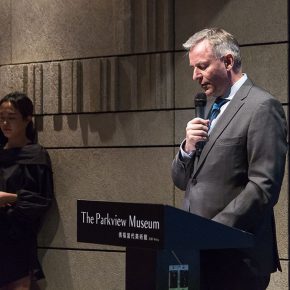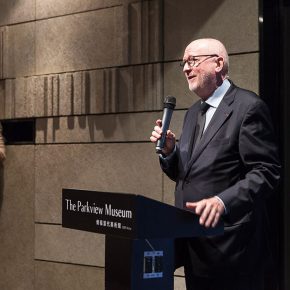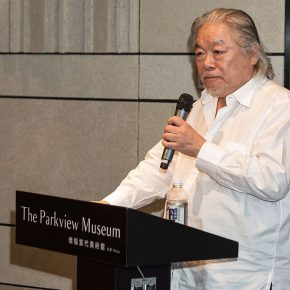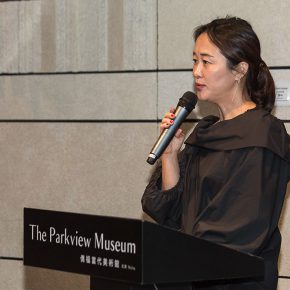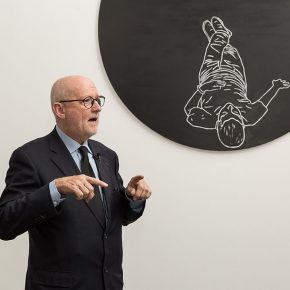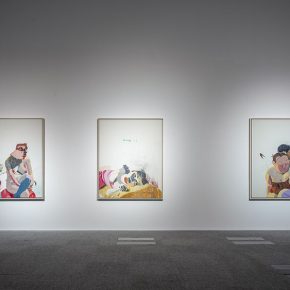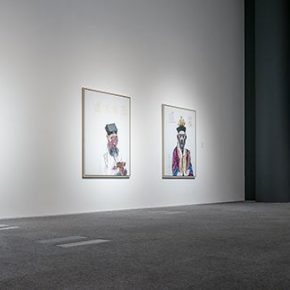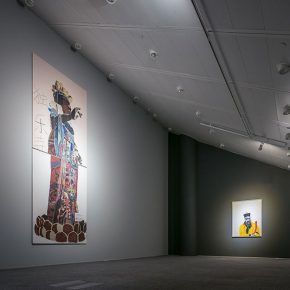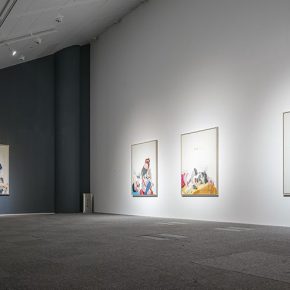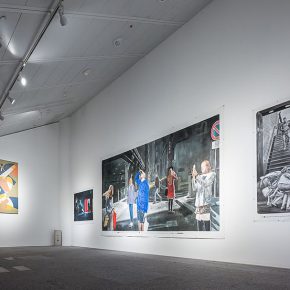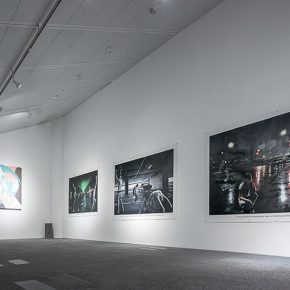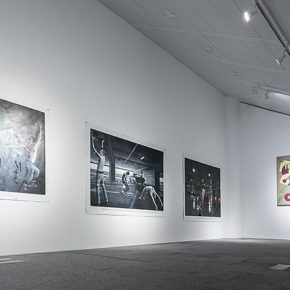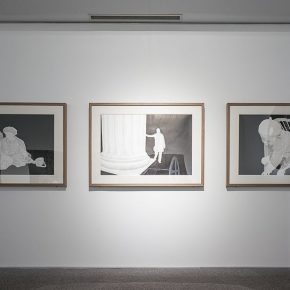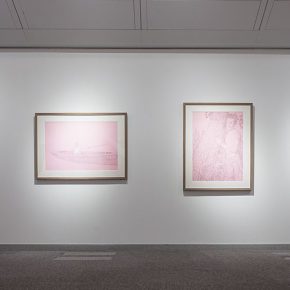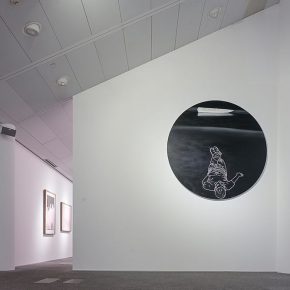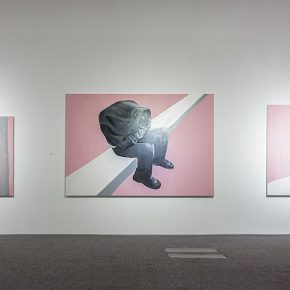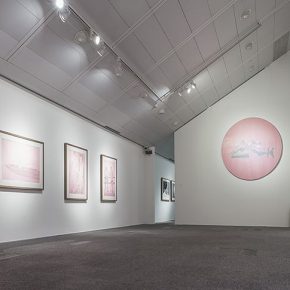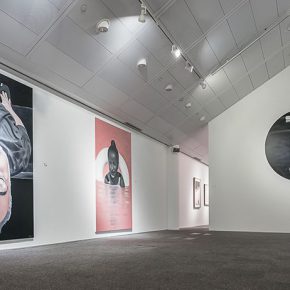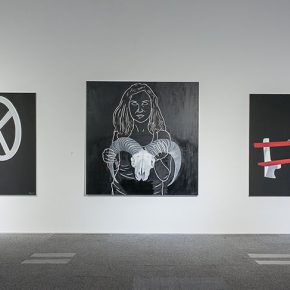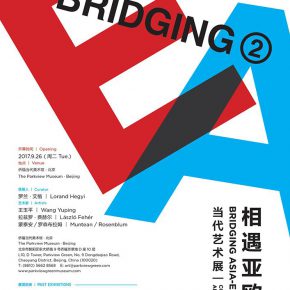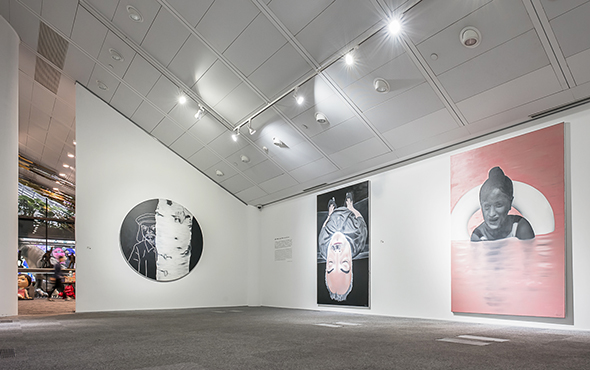
In order to build a bridge connecting the Orient and the West, an interactive dialogue between Chinese and European artists has been opened to promote a mutual appreciation and deep understanding of the unique aesthetic value, artistic value, cultural traditions and artistic language generated in different cultural contexts. On September 26, 2017, “Bridging Asian-Europe II” opened at the Parkview Museum in Beijing. The exhibition features the works by Wang Yuping (China), László Fehér (Hungary) and Muntean/Rosenblum (Austria / Israel). Lorand Hegyi, the internationally acclaimed curator and art historian, serves as the curator.
“Bridging Asian-Europe” series of exhibitions is a key part of the culture program by the collector Mr. George Wong, who attempts to offer a platform to the artists to start a real dialogue, creating a real and special space. Therefore, the structural form of this series of exhibitions mainly emphasizes the personalized presentation of the artists – each artist’s works is presented in the form of solo exhibition, with an independent space and environment, mainly presenting paintings, rather than focusing on any media or methodological orientation. The curator of the exhibition Lorand Hegyi said that each part of the exhibition presented a different visual element, through which the artists touched some specific realities, this creates a reflection and transformation, to show the complex and diverse interpretations of the realities of contemporary society.
Although each group of works of artists can be considered as a form of independent solo exhibition, we can still see a specific idea that runs through them. The creations by the three artists from different cultural contexts are of the same theme and same poetic expression. In these works, the characters are often their theme, and the images of these characters often comes from their relatives or friends who are familiar with the artists, rather than a purely realistic portrayed of characters, it is a new aesthetic orientation presented by the artists who had individual processing and re-creation of subjective feelings.
Chinese artist Wang Yuping brings us extremely strong, passionate and impliedimages filled with rich connotations, reminiscent of the cultural history, rules of art history, literature, text and rational material, as well as drama, literature, philosophy and a reference to traditional historical knowledge. His works show a rich and complex image narrative, in which he constantly questions the relationship between the authenticity of the individual, the identity of the individual, the psychological and emotional reality, as well as the relationship between social culture, history, ideology and illusory reality, which is the core of his work. In the screen, Wang Yuping uses a reflective method of analysis to blend the deterministic information such as social culture, history and speeches with fantastic and complex thoughts; blending the fantastic power and desire with the plots of dreams, so as to be close to the complexity of individual identity.
He built a parallel and poetic structure between the present reality and the illusory alternative realities. This parallel structure gives mysterious double identities to the characters, animals, and other natural or artificial objects with his brush. Under his brush, the faces of the characters, the physical surfaces of the protagonists, and the surfaces of the ordinary and even commonplace everyday things, all showcase a strange, shadow-like self that cannot be adequately described or expressed. This shadow gives people an unique, unknown, invisible and secret perception of other experiences, rules, or objects.
Hungarian artist László Fehér’s works are made of ready-made images, ordinary iconic pictures or old photographs. These photographs and images have a symbolic function that conveys important historical facts, carrying a function of social and cultural significance, and it is also a record of micro personal history and family albums. In the world of László Fehér, everyone is passing, and everything exists only for a moment, people can find the current quiet, secret and a sense of depression in every part of the screen. It seems that the characters are coincidentally placed in a special space, while their possession of space is only temporary, momentary, and their existence seems fragile and short, and it has always implied that it is objective and inevitable.
In Muntean/Rosenblum’s meaningful paintings and sketches, the artists question and mock the irrepressible, chaotic irrational and noisy language barriers that drive people to act in a bizarre fashiont, while the characters seem to be forced to stay in a very unstable and obscure theater stage setting, which are all like thefilm-like scenes in the illusion. Everything in the painting seems to be clearly created, but the real motive of the act, the relationship between the location and character, as well as the relationship between the text and image, are still unresolved. Muntean & Rosenblum use subtle irony to question the differences between the artificial illusory world and the real material world from many perspectives, to question the difference between visual information and textual information, and more importantly it has questioned the fracture between our daily pattern of behavior and the imagined illusory pattern.
The works of “Bridging Asian-Europe II” presents the rich and mature world of painting, where it plays an important role in the reproduction of characters and the social & cultural environment, as well as the unreal reality mixed with memories, reflections, self-projection, dreams and subconscious. With the quality of questioning, the artists try to reveal the conflicts and differences between different information, different communication systems, differentsystems of language, as well as different visual and textual information. The exhibition uses these powerful works to offer a complex, rich, profound, full-minded, and yet disturbing and dynamic perspective to deal with the most basic and central issue of “where do people go”.
Text by Lin Jiabin, translated by Chen Peihua and edited by Sue/CAFA ART INFO
Photo courtesy of the organizer


